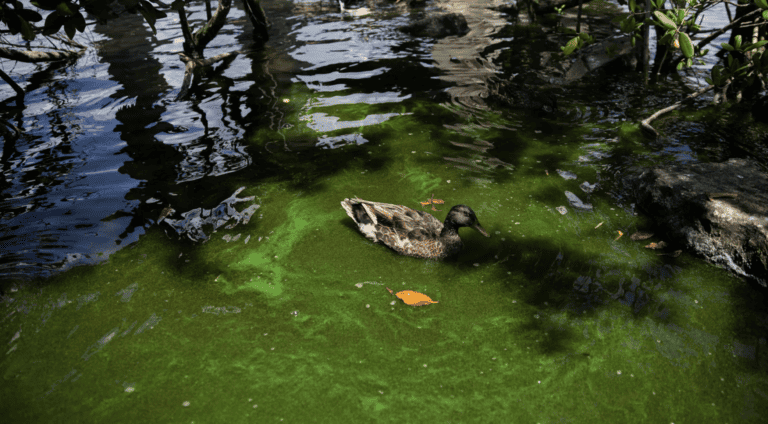Photo: A duck swims in algae laden water that has gathered on the bank of the Caloosahatchee River at Centennial Park in Fort Myers on Thursday, July 13, 2023. Algae is showing up in parts of the river and canals in Southwest Florida.
REVARD COUNTY, Fla. — A new federal report says more people and animals, including beloved pets, are getting sick from exposure to toxic algae that forms in natural waterbodies across the country.
While there have been no human deaths, animals have died from the toxic effects, the report shows.
Harmful algal blooms (HABs) seem to be becoming worse nationwide, especially during the summer. According to the Centers for Disease Control and Prevention’s new report that analyzes data from 2021, 16 states reported a total of 117 human illnesses and at least 2,715 animal illnesses as a result of HAB events.
HAB events peak in August, the report found, with 90% of blooms occurring in lakes, reservoirs and other fresh waters. HABs emerge from the rapid growth of algae or cyanobacteria — also known as blue-green algae, according to the CDC.
“HAB events of public health concern are primarily caused by microalgae (e.g., diatoms and dinoflagellates), cyanobacteria, and the toxins they can produce,” the CDC said in its report. “HAB events, which can be intensified by factors such as nutrient pollution and warmer water temperature, can have public health, environmental, and economic impacts.”
The CDC’s report is based on voluntary reporting by public health agencies and their designated environmental health or animal health partners.
In 2021, the CDC said 368 HAB events were reported by 16 state jurisdictions, which is a significant increase compared to previous years where less than 250 HAB events were reported in 2020 and 2019.
Exposure to high levels of blue-green algae and their toxins can cause illness and death, the CDC said. Several states have reported wildlife, domestic pet and livestock illnesses and deaths in recent […]
Full article: www.usatoday.com

